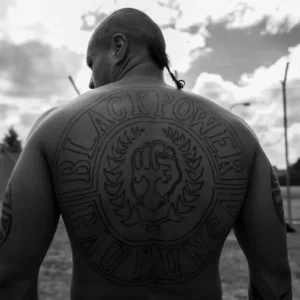According to dominant stereotypes, men can't be sexually assaulted by women. But according to a wide-ranging study, around two-thirds of men who report sexual victimization say their assailant was female.
Published in
Broadley
There are many great things about the Centers for Disease Control and Prevention’s survey on sexual violence, according to UCLA law professor Lara Stemple. “The interviewer is trained to ask lots of questions and to maximize respondent comfort using check-ins,” she explains. “Also, it’s a health survey, which is a good context for people to think about their bodies and their own well-being.”
But when it comes to reporting the outcomes of the survey, the CDC discounts men who have been forced to penetrate someone else—either by coercion, physical force, or lack of consent—by listing statistics for the crime under the category “other victimization,” along with seemingly lesser offenses like “non-contact unwanted sexual experiences.”
“They put it in the same broad category as being flashed or receiving lewd comments from a stranger,” Stemple said. “There’s no context, and it really minimizes the abuse.”
The de-fanged language the CDC has adopted to label male victims of sexual assault underscores a worrying tendency among researchers as well as rape counselors and law enforcement officials, Stemple says. The implication: “For men, all sex is good sex.”
“The way we talk about men and sex needs to change,” Stemple says. “When we have these stereotypes for men, it makes it hard for them to come forward when they’re victimized.”
Stemple has long focused her research on how sexual violence against men goes under-reported. In 2014, she released a paper on male victims of sexual violence which analyzed several national surveys and found that, when taking into account cases where men were “made to penetrate” someone else, the rates of nonconsensual sexual contact between men and women were basically equal: 1.267 million men said they had been victims of sexual violence, compared with 1.270 million women.
The “made to penetrate” category is not the type of violation we imagine when we think of sexual assault, as Slate’s Hanna Rosin wrote in a piece on Stemple’s research in 2014. But it can result in similar psychological and physical effects, including sexual dysfunction, depression, loss of self-esteem, and long-term relationship difficulties.
I met a man who who was victimized by a woman when he was a child. He is, to this day, afraid to be alone in a room with a woman.
Although there is still much work to be done in order to understand the effects of sexual assault on male victims, Stemple’s new research focuses on the perpetrators themselves. In a 2016 study, she and two other researchers examined four large-scale surveys from the CDC and the Bureau of Justice Statistics to better understand female sexual predator behavior, analyzing both male and female victims. The findings contradict widely held stereotypes about women being unlikely abusers.
“People think female perpetration is rare,” Stemple says. “They think it’s a fluke—like it’s one high school teacher and a student. But it’s very widespread, according to these surveys, and nobody seems to know that. It’s astonishing to me.”
The threat posed by female sexual predators has long been misunderstood and minimized by the research community. Although the possibility was first documented in research literature in the 1930s, systematic studies of sexual victimization perpetrated by women were not undertaken until the 1990s. Even at that point, research was underdeveloped—focusing, primarily, on child sexual abuse. It wasn’t until the last decade that research on this topic has burgeoned.
Stemple’s new, wide-ranging study presents the results of the CDC’s most recent phone survey, which found that 68.6 percent of men who report sexual victimization describe female perpetrators. Meanwhile, among men who reported being made to penetrate—”the form of nonconsensual sex men are much more likely to experience in their lifetime,” according to the study—79.2 percent cited female perpetrators.
The study’s authors also looked at how female sexual predators operate behind bars. According to the Bureau of Justice Statistics surveys—which, unlike other surveys, uses frank terms like “blowjobs,” which Stemple says improve accuracy—female inmates are much more likely to be abused by other female inmates than by male staff. Additionally, among all adult prisoners reporting any staff sexual victimization, 80 percent reported only female perpetrators; among juveniles, the rate was even higher, at 89.3 percent. Perhaps most surprisingly, given the picture painted by depictions of life in prison in popular culture, the same survey found that the incidence of sexual abuse among female prisoners was roughly three times the rate of that among male prisoners.
Given these statistics, it’s all the more striking that so few women ever end up on sex offender registries. One five-state study of registries found that between 0.8 percent and 3 percent of the people on sex offender registries are female; other surveys have found proportions lower than 2 percent.
Then again, there are many barriers for men who wish to report sexual assault. According to Stemple’s study, some are embarrassed to report because of the widespread perception of women as non-threatening. Others lie and say they were actually sexually assaulted by other men, or are pressured to reframe their victimization as a “rite of passage.” As men grow older, studies show they’re more likely to be blamed for their abuse than female victims.
Gender stereotypes that portray men as essentially un-rapeable likely haven’t helped reporting rates, either. A majority of college students surveyed in 1992 did not believe a “big, strong man [could] be raped by a woman,” and college-aged respondents in a more recent 2012 survey said that a man raped by a woman would not be “very upset.”
Victimization of women by other women has been studied “even less than opposite-sex female perpetration,” according to the study. “Heterosexism can render lesbian and bisexual victims of female-perpetrated sexual victimization invisible to professionals,” the study notes. “While a few rape crisis centers have created small lesbian-oriented programs, lesbian and bisexual women report that, in general, hotlines, support groups, and legal aid organizations that address sexual violence seem designed for those victimized by men.”
“I met a man who does work on this issue, and who was victimized by a woman when he was a child,” Stemple says. “He is, to this day, afraid to be alone in a room with a woman. As you can imagine, this is very uncomfortable for him to share with people; he thinks they’ll find it shameful. Today, he’ll talk about it as a survivor, but he’s quite rare. You can imagine that other men would have this same fear of coming forward, especially if the perpetrator was female.”
By Steven Blum
Published in Broadley
November 30, 2018



